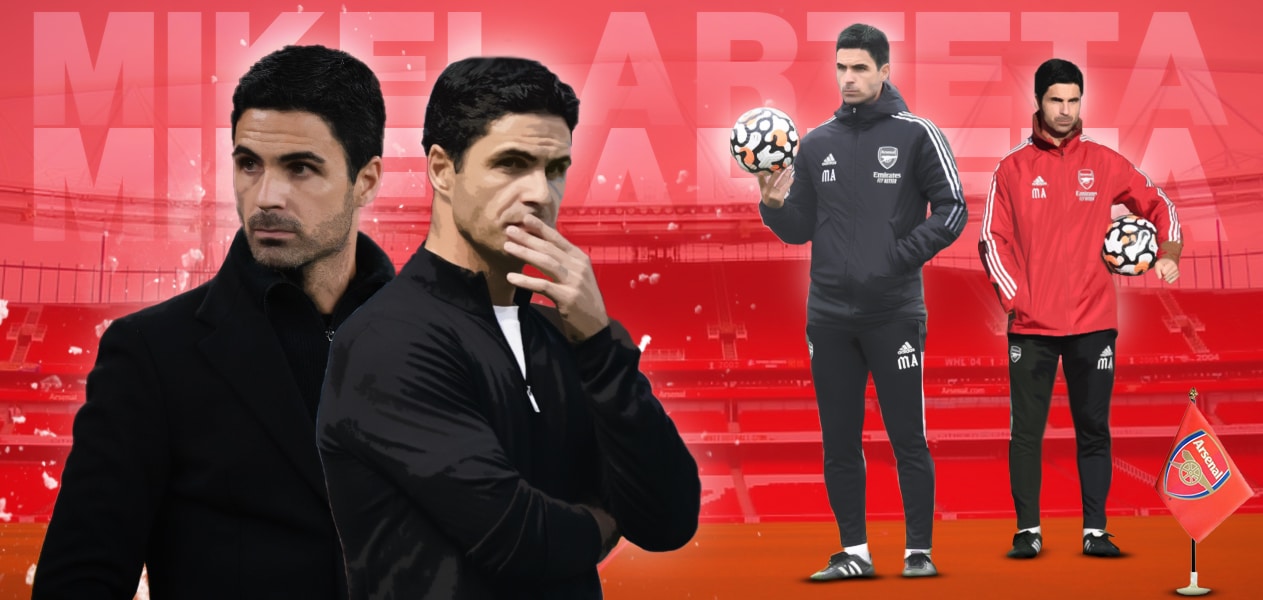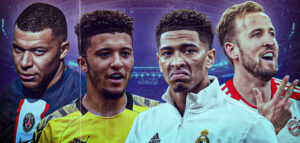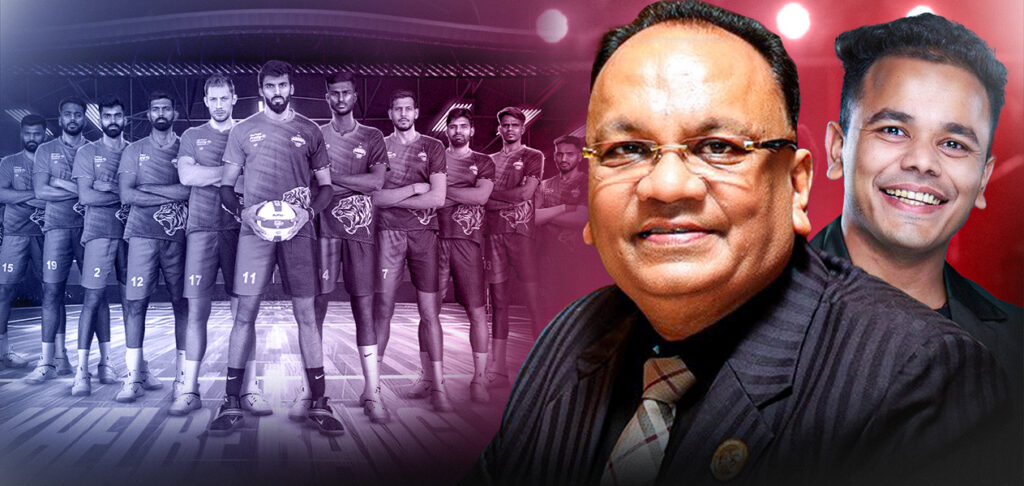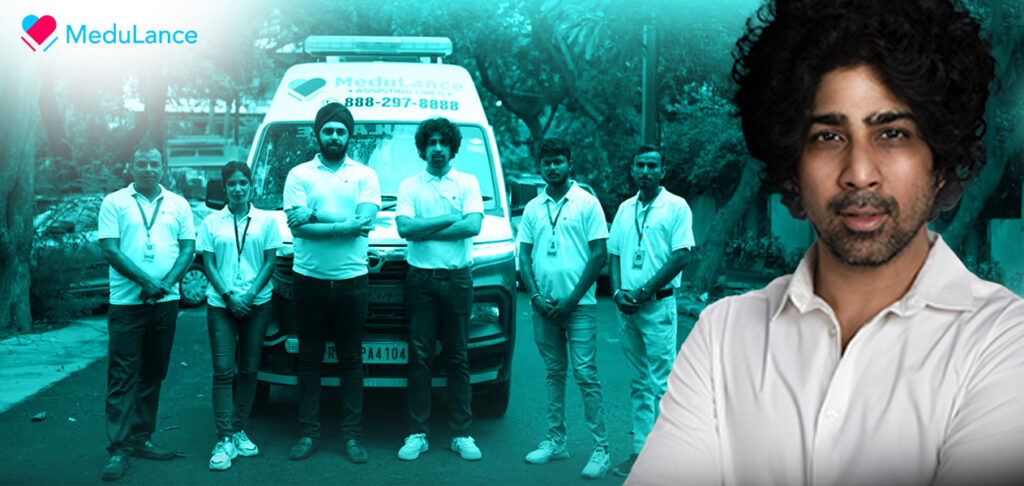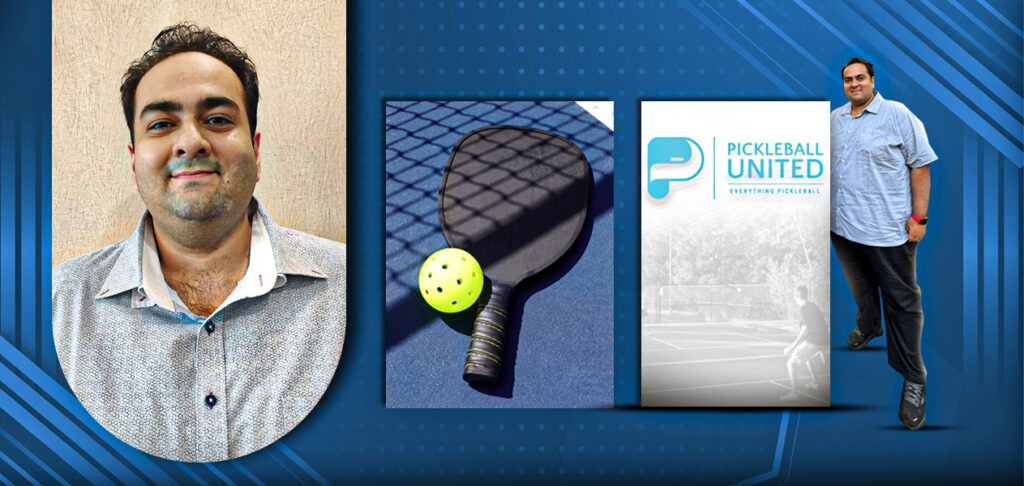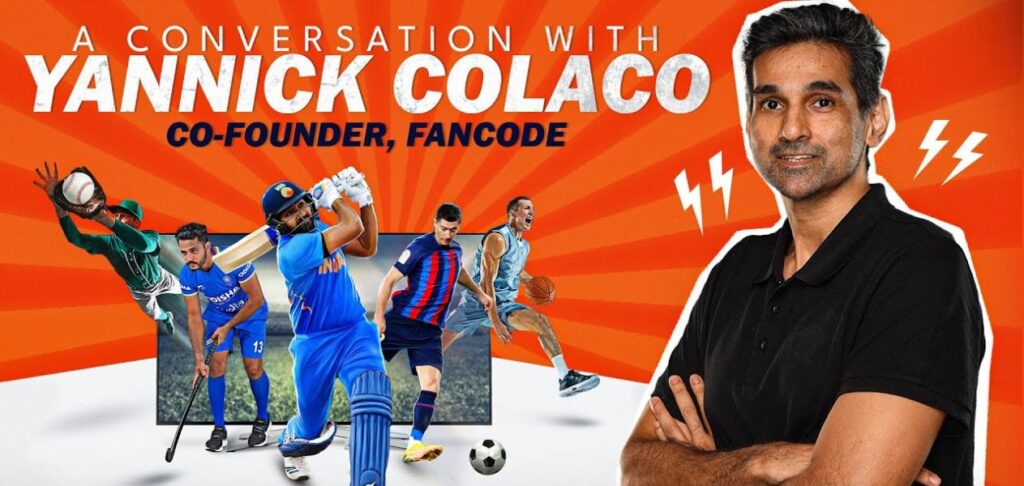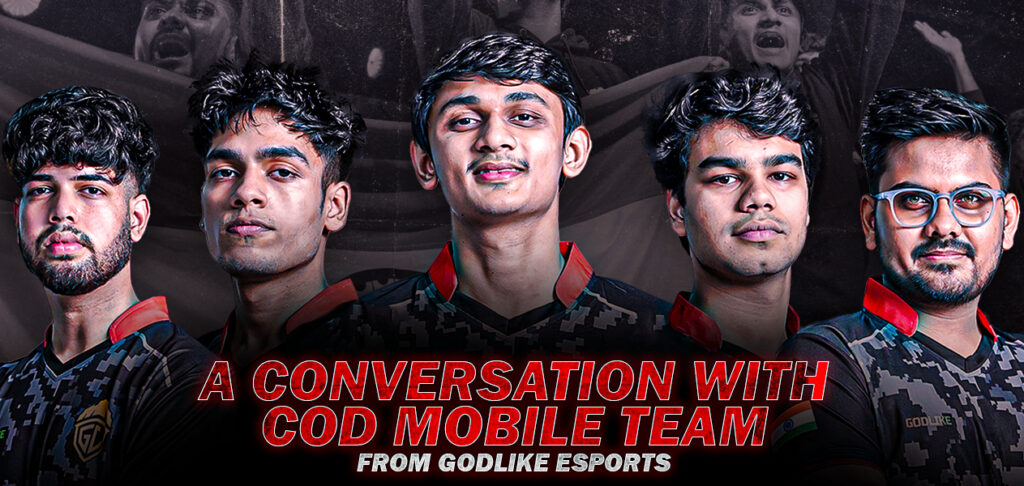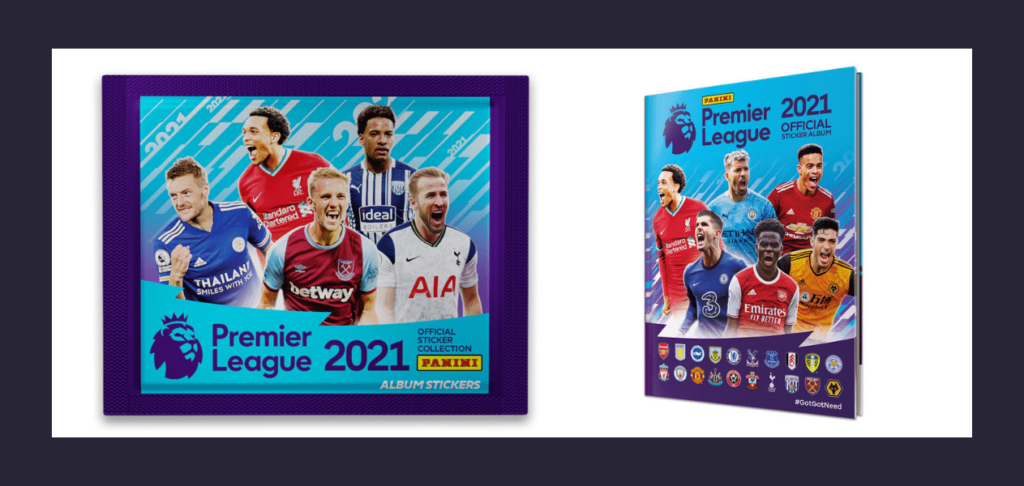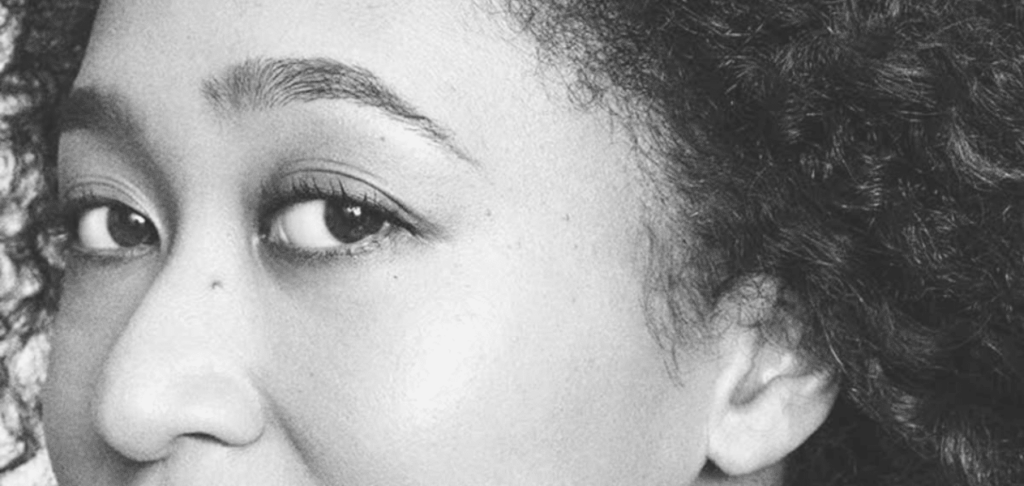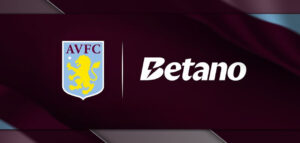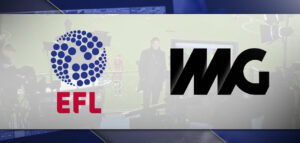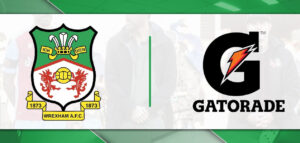With a plethora of fresh young talent, Arsenal are one of the youngest teams in world football, and they are due to explode.
It may not have looked pretty, but for Arsenal, the victory against Watford still counts for three points. Having gone ten games unbeaten in all competitions—a run that includes seven clean sheets and only two draws—there is every reason to believe that this Arsenal team are the real deal and have what it takes to compete against the best.
Yes, that includes the likes of Chelsea and Manchester City. Maybe.
It is the 5-0 whopping that Arsenal received at the hands of Pep Guardiola’s Man City, following which Arteta’s team seem to have turned a corner. It was the manner in which Arsenal fell apart in that match that raised quite a few eyebrows, granted that Arteta was without the services of half of his first-team starters who missed the start to the season through various injuries and/or illnesses.
It has been more than two months since Arsenal last tasted defeat, and they now sit fifth in the Premier League table, three points clear of a crumbling Manchester United, two points behind a leaky Liverpool side, and three points behind David Moyes’ unpredictable West Ham United.
However, there is still a lot of football to be played, and sure enough, November marks the start of a tricky and hectic phase for the club, with fixtures against the likes of Liverpool, Manchester United, Everton and West Ham United coming up.
If they manage to weather this storm, Arsenal shall find themselves in relatively positive spirits by the time 2022 comes around, and with it, shall return the hopes for European qualification and even silverware.
The misconception regarding KSE’s ownership of Arsenal Football Club
The head of Kroenke Sports & Entertainment (KSE), Stanley Kroenke, became a shareholder of the club in May 2007 and was appointed to the Board of Directors in September 2008. Then, in April 2011, Stan Kroenke and KSE became the club’s majority shareholders after acquiring 62.89% shares by purchasing the stakes of Danny Fiszman and Lady Nina Bracewell Smith.
Alongside KSE, Russian businessman Alisher Usmanov was one of the major shareholders in the club, having almost 29% of the shares under his entity Red and White Holding PLC. Eventually, both Alisher Usmanov and KSE wanted to become full proprietors. Thus, it essentially became a matter of who was willing to give up first. In the end, it was Usmanov who gave up.
However, it is important to note that the period between 2007 and 2014 was one of the darkest phases in the club’s history. Not only were Arsenal subject to major issues with their stadium debt, but they were also having to sell their best assets with little to no investment from any of the majority shareholders in return.
Moreover, it is believed that Alisher Usmanov was ready to inject funds into the club, but the board and Arsène Wenger vetoed it.
What transpired after that was a complete mess. The club had no cash injection from any major investor because two billionaires were in the race to buy the club outright, while Arsène Wenger was hell-bent on committing to a self-sustaining model he had forged for the club during the hard times.
Although the club broke the bank to acquire the services of marquee players like Alexis Sánchez and Mesut Özil around 2013-14, it was glaringly obvious that Arsenal were merely papering over the cracks with players who they couldn’t afford in the long run, and ultimately paid the price for it in the following transfer windows, including a full summer window in which Petr ?ech was the only summer signing.
Around 2015, it was clear for all to see that Arsenal’s self-sustaining model was failing and needed a similar—if not the exact—model of private ownership the likes of Chelsea and Manchester City (even Newcastle United, say, in about five years from now) have to remain competitive and fight for major trophies. Therefore, when the system finally collapsed as Arsène Wenger’s Arsenal failed to qualify for the UEFA Champions League for two seasons in a row, Alisher Usmanov gave up his shares to KSE, which forced a full takeover at Arsenal in 2017.
Much frustration and many campaigns have been thrown at the Kroenkes recently—and in the past as well—for not spending much during the 2011-2017 stint as the majority shareholders, but it was never going to happen until they were convinced they could own the club fully. It would have been financial suicide to inject funds into the club with other shareholders still being there, but now that the takeover was complete, the new owners knew they needed to do a lot of chopping-and-changing and going back to basics in order to achieve their supposed goal of making Arsenal compete at the level they deserved, which was and is — at the very top.
A wobbly start, but is that light at the end of the tunnel?
Shortly after the takeover, Silent Stan‘s son, Josh Kroenke, was appointed Director of Arsenal Football Club with the view of being closer to the club and having a more “hands-on” approach. His first appointments were made seemingly with good intentions, as he hired three experts in Raul Sanllehi as Head of Football, Sven Mislintat as Head of Recruitment and Huss Fahmy as Head of Negotiations.
Ivan Gazidis, the former Chief Executive of Arsenal who was also at the forefront of these appointments, vouched for these individuals, but shortly after their appointments, he resigned and joined Italian club AC Milan. This broke the structure and ruined Josh Kroenke’s short-term plans, ensuing another reshuffling of the staff. Vinai Venkatesham, who was Managing Director at the club, had to replace Ivan Gazidis and oversee the club with little to no experience, and shortly afterwards, Sven Mislintat also left due to disagreements regarding the direction of the club.
The blame for this commotion should fall entirely on Ivan Gazidis. He left a club in transition with people in roles that never existed, and as a result, we saw the mess in the coming transfer windows with Raul Sanllehi spearheading the recruitment process with his supposed “contact book”.
The first two transfer windows under Don Raul saw the Gunners spend well over £200m, which was the first indication of the new willingness to spend at Arsenal under KSE. Unfortunately, the decisions made by Sanllehi were not with the club’s best interest at heart, as a majority of the signings were made under—to say the least—dodgy circumstances, with him taking hefty commissions.
For instance, the transfers of Nicolas Pépé, Kieran Tierney, David Luiz and a few others were done as favours to agents Jorge Mendes and Kia Joorabchian. A year after these transfer dealings took place in what was Arsenal’s biggest spending transfer window at the time (2018/19), an independent auditor was hired to investigate the financial transactions of the singings, and inevitably, there were a lot of red flags that forced Josh Kroenke to sack Raul Sanllehi with immediate effect. Huss Fahmy, too, as a result, left the club along with Sanllehi.
Tim Lewis, a corporate lawyer, was hired and given a spot on the board. His role as the Non-Executive Director along with his specialisation gave Josh Kroenke the assurance of the finances being spent in the most compliant way with the club’s financial framework restructured to ensure that injection of cash could be done efficiently in the future as and when required.
Now that the finances were secured and monitored with the club’s interests prioritised, Josh’s next move was to hire someone who was the best in the market in terms of negotiations, had good contacts and knew his craft. So, he hired former Premier League Director of Football, Richard Garlick.
Garlick, who was the Director of Football at the Premier League since 2018 and worked previously as the same for West Bromwich Albion for eight years, joined Arsenal before the start of the 2021/22 Premier League season. He is now a member of the Arsenal Executive team and works closely with technical director Edu Gaspar, manager Mikel Arteta and academy manager Per Mertesacker.
After two key acquisitions in the executive department, it was time to see how Arsenal performed in the transfer window, and Josh gave the club a budget of more than £150m. As a result, Arsenal became the biggest spenders not only in the Premier League but also throughout Europe.
The notion that the Kroenkes didn’t invest in the club was, henceforth, thrown out the window.
This is where Tim Lewis came in: although the club were operating at a loss, the owners—with help from Lewis—obtained a loan to make the debt payable so that it became more cost-effective, so more focus could be placed on transfer expenditure instead of incoming revenue.
With everything in place, Arsenal made as many as six signings and addressed most positions that they needed players in. Although the club weren’t helped by outgoings due to the financial situation of buying clubs, KSE did their part in overseeing a major squad overhaul in what was an unprecedented pandemic-hit 18-month period.
Why Unai Emery never became The One for Arsenal and KSE?
In 2018, for the first time in 22 years, Arsenal went on the hunt for a new manager. Arsène Wenger’s legacy shall remain engraved in North London forever, but he stepped down after a middling conclusion to his tenure.
Josh Kroenke and Co. had a herculean task at their hands, and replacing someone of Wenger’s stature was always going to be a tall order.
Moreover, after spending two seasons without Champions League football, the top priority was always to get back into Europe’s elite competition. Thus, among the managers who were available in the market at the time, Unai Emery, the Spanish tactician known best for winning the Europa League with Sevilla three seasons in a row and multiple domestic trophies with Paris Saint-Germain, became the top candidate for many, with the Spaniard’s contract with PSG expiring at the end of the 2017/18 season.
The club’s push towards experience and proven success was accepted by large sections of the fanbase at the time given Emery’s innate ability to win European competitions, something Arsène Wenger never accomplished, although the Spaniard’s inability to properly communicate in English led to him getting disrespected and ridiculed even by the Arsenal fanbase.
Emery’s start to his Arsenal tenure got off with a couple of tough fixtures against Chelsea and Manchester City, and his team lost both games. But then followed eleven consecutive victories and a 22-game unbeaten run across all competitions, which meant Arsenal were enjoying their best run of form in over a decade.
By January, Emery had the backing of the club, most of the players, and many supporters. It looked like his transformation of Arsenal was well underway.
But the manner in which Emery’s Arsenal got those wins always aroused one particular question amongst the majority Arsenal fanbase — “How long can we sustain this?”
Before we discuss Emery’s system and how it all fell apart, we need to talk about his role within the Arsenal hierarchy first. Unlike Arsène, Unai Emery was appointed as the Head Coach of Arsenal’s men’s team. Although he had his say in the profile of players he wanted in his system, the final call was made by Raul Sanllehi and Co.
Thus, the famous interview in which Emery involuntarily blurted out his desire to get Wilfried Zaha but had to settle with Nicolas Pépé of LOSC Lille makes a whole lot more sense now.
Before Pépé, four more signings were made during the 2018/19 season — Lucas Torreira (£26m), Bernd Leno (£23m), Sokratis Papastathopoulos (£14.5m) and Mattéo Guendouzi (£7m).
This is where it all started going south for Arsenal and Emery. While he wanted his team to play slow, possession-based football, with direct build-up play during the transition, the players Emery had were technically suited to his style but lacked the physical aspect in their game, and coupled that with the stinky mindset of some of those new signings and some existing ones, this was always a recipe for disaster.
By the end of 2018, Emery was making a conscious effort to embrace the young players at the club and incorporate them into his plans; youngsters like Mattéo Guendouzi, Emile Smith Rowe and Bukayo Saka all made their senior debuts under him.
Although his plans to incorporate youngsters into the first-team squad appeared beneficial for the club, Emery’s methodology was not as fruitful for some of the other players in the squad, especially the likes of Mesut Özil and Aaron Ramsey, who flourished under Arsène Wenger’s reign.
Ramsey, along with Mesut Özil, saw fewer minutes under the Spaniard’s leadership. While the Welshman played out the final year of his contract and left at the end of the season to join Juventus on a free transfer, Özil was well and truly frozen out, sometimes not even travelling with the team. There were rumours that the German was looking for the exit during Emery’s time at the club, although the latter insisted that he made it clear to Özil that he was trying to get the best out of him, but the two hardly ever saw eye-to-eye.
As feuds with senior players escalated, Arsenal’s form deteriorated as the start of January marked the end of Emery’s honeymoon period. Their form dwindled, and Emery’s tactics reinforced inconsistent play throughout the second half of the season, followed by a dismal conclusion.
Despite lacklustre performances throughout the second half, Arsenal were in a position to qualify for the Champions League as they entered the final leg of fixtures for the season.
Instead, the Gunners lost four and drew once in the seven games, all of which were against teams placed in the bottom half of the table. And the final nail in the coffin came when Emery’s team were thrashed by Maurizio Sarri’s Chelsea 4-1 in Baku in the Europa League final, which enraged large swells of the Arsenal supporters.
At the start of the 2019/20 transfer window, there were more questions than answers, most of which circulated around contending for Champions League qualification, something Emery was specifically brought in for.
After flirting with the prospect of signing more experienced players, the verdict was split on both players for the present and the future. In came players like William Saliba (£27m) (who was immediately loaned back to his former club, AS Saint-Étienne), Nicolas Pépé (£72m), Kieran Tierney (£25m), Dani Ceballos (loan), and Gabriel Martinelli (£6m). David Luiz (£8m) arrived late to add some desperately-needed experience at the centre-back position.
The plan was clear: lean on veteran leadership and incorporate the new players as well as youngsters into the team.
But the plan never took off.
Before pre-season had even started, club captain Laurent Koscielny refused to go to the US tour with the team, as the Frenchman wanted to cut his contract short by a year and leave the club for free, something Arsenal were unwilling to do. Eventually, he left on a small transfer fee, returning to his home country as he signed for Bordeaux. The next potential captain for Arsenal, Nacho Monreal, also left the club to sign for Real Sociedad one day before the North London derby after serving six years in the English capital.
Thus, with Aaron Ramsey and two more senior veterans walking out the door, Emery left the task of picking the next captain to a team vote, and they chose to put their trust in Granit Xhaka for guidance.
But soon, both Emery and Xhaka fell from grace. The team’s dismal performances principally fell on their shoulders, with Xhaka getting stripped of captaincy after an outburst of elephantine proportions against Roy Hodgson’s Crystal Palace.
The consistent build-up of groaning fans, agitated players and dreadful results and performances finally reached a boiling point in November 2019. Emery’s exit felt like a slow burn. At times, it looked like he might be able to recover and give the Arsenal fans what they had been promised, but his chopping-and-changing and fickle actions prevented a true breakthrough.
The final dagger to the heart of whatever life Emery had left in his Arsenal career came in the form of two damaging defeats against eventually-relegated Bournemouth and Watford, where his team conceded 55 shots and four goals, while the 3-0 defeat to Eintracht Frankfurt in the Europa League Group Stage marked the end of his Arsenal tenure.
Muddled in a seven-game winless streak, the Gunners were slipping towards the relegation places, out of the Champions League qualification race even before it began.
As does any story, Emery’s contains ups and downs. A club as big as Arsenal provide a tremendous spotlight, magnifying every event that takes place. For Emery, that harsh spotlight shone all the brighter on his error-strewn ways. In the end, he was unable to lead the club out of Wenger’s shadow.
Why stick with an inexperienced Mikel Arteta?
FA Cup glory — a short-term fix
When Mikel Arteta joined Arsenal as first-team head coach in December 2019, he knew he had his work cut out for him as he was stepping into a fractured team with a paltry win percentage of 34.6% while conceding 1.5 goals per game.
The former Manchester City’s men’s Assistant Coach initially sought to make the Gunners harder to beat using an asymmetrical 4-2-3-1 shape. While this rewarded the team with a couple of solid results and reduced the number of goals conceded per game to 1.05, Arteta opted for a 3-4-3 system in ten of the last eleven games in all competitions, winning 70% of those games and conceding just 0.7 goals per game while scoring 1.8 goals per game in return.
With this system, Arteta’s Arsenal went toe-to-toe with the very best, ousting Pep’s Manchester City in the semi-final of the FA Cup before beating Frank Lampard’s Chelsea to lift the trophy for the fourteenth time in the club’s history.
Like Pep’s City, Arsenal also put the 2019/20 Premier League champions Liverpool to the sword using the same group of players that were beaten comprehensively by the league’s top two sides earlier on in the season — hallmark of a great tactician.
Arteta proved that he could get the better of the top sides with his 3-4-3 system, as his team won four out of the five matches where he used his approach against a Top Six opposition. By giving David Luiz the necessary defensive cover and freedom to make penetrative passes, while overloading the wide areas and making the most of Pierre-Emerick Aubameyang’s finishing, Arteta’s 3-4-3 did a brilliant job of stifling the opposition press while making the team more clinical despite boasting less quality than the rivals.
Thus, without a solid anchor in midfield and the lack of a progressive passer in the middle, this 3-4-3 system was always meant to be a short-term fix and it worked wonderfully for the Spaniard.
Also Read – Manager Solskjær and Manchester United: A Marriage Dead in the Water
A few highs. A lot of lows.
The next step in Arteta’s long-term project at Arsenal was to pluck the most obvious holes for the present while building for the future at the same time. He was also keen on removing the negative characters within the Arsenal dressing room, and as a result, players like Emiliano Martínez (£15.66m), Mattéo Guendouzi (loan), Lucas Torreira (loan) and Henrikh Mkhitaryan (free) were let go by the club, while Brazilian centre-back Gabriel Magalhães (£23m), veteran Premier League playmaker Willian (free), and deadline-day-signed Thomas Partey (£45m) were the major additions during the 2020/21 summer window.
However, unlike the previous two seasons, where the head coach had very little say in terms of picking a particular player as a potential transfer target, Arteta’s position was upgraded to first-team manager from head coach that would see him work closely with technical director Edu, while Vinai Venkatesham became the new Chief Executive at the club.
Given the financial restrictions due to a global pandemic, Mikel and Edu’s recruitment was not bad at the time. Willian was a proven player and had just enjoyed his best season in terms of outputs the season before. Nobody saw his dip in form coming. The rate at which it happened was astonishing as well, to say the least.
Along with Özil, Willian was always likely to be frozen out, which meant Mikel and Edu’s short-term gamble didn’t pay off.
Partey, on the other end, had a season to forget as he spent more time with the physio than on the pitch. The Ghanian showed glimpses of his best, but injuries and lack of recovery derailed both his and Arsenal’s campaign.
Gabriel was a great coup at just £23m and started off brilliantly, but COVID and injuries meant he, too, was in and out of the squad and never really settled into that Arsenal backline during the 2020/21 campaign.
To further worsen the situation, having sold Martínez to Aston Villa with Bernd Leno chosen as the designated No. 1 goalkeeper, Arteta and Arsenal went for Rùnar Alex Rùnarsson as the No. 2 goalie, but he turned out to be nowhere near good enough to be Leno’s backup.
And all hell broke loose when Mikel Arteta lost all his creators; Mesut Özil was never going to be included in that 25-man squad even after the club failed to offload him due to his hefty wages, and with Willian not firing and Emile Smith Rowe still out with injury until early December, Arteta and Arsenal went on a nine-game winless run that saw the team drop to fifteenth in the PL table.
Everything pointed towards an inevitable sacking. That, though, was never on the cards.
When Arsenal appointed a rookie in Mikel Arteta, based on the evidence at hand, it would have been considered an educated guess to say that he would have his team play expansive football. However, when you look at the players he inherited and try to put them in an expansive-football system, it doesn’t seem like a good fit.
Possession football is primarily surrounded by how compact you are without the ball: you have to win the ball back as quickly as possible, and if that’s not possible, you need to make sure you are compact centrally so you’re not vulnerable during defensive transitions. Arsenal had unathletic players in defence and midfield, making it very difficult to counter-press (win the ball back as quickly as possible) and to recover/stay compact in defensive transitions.
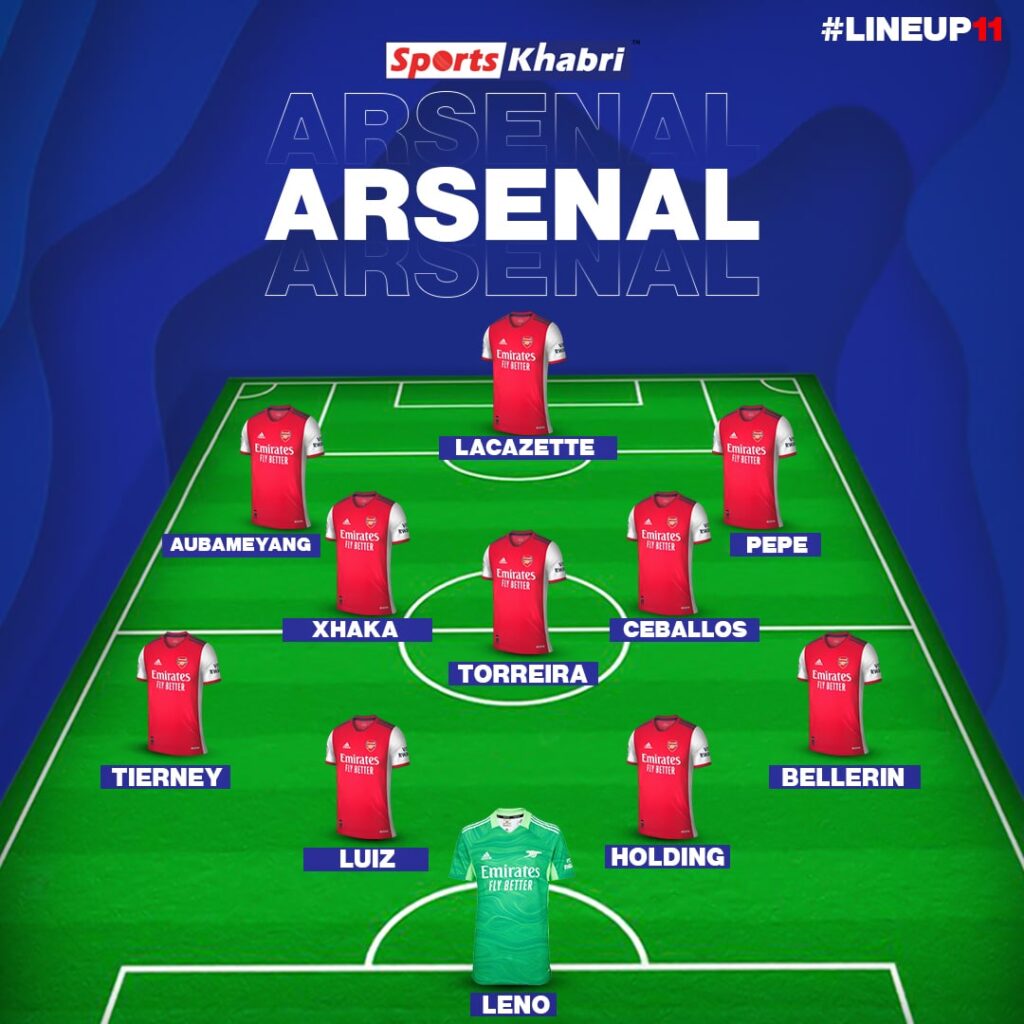 Probable XI of the squad Arteta inherited
Probable XI of the squad Arteta inherited
Now we all knew this was going to be a long-term project, and just because Arteta’s philosophy didn’t match up well with Arsenal’s squad at the time doesn’t mean the appointment was bad, because the players themselves were not good enough in relation to where the club ideally wanted to be, that is, challenging for titles, so no matter who was appointed, a clearance was required.
The January transfer window saw more players leave the club, either by going out on loan or by getting their contracts terminated.
Mattéo Guendouzi was loaned out to Hertha BSC, Joe Willock to Newcastle United and Sead Kolasinac to FC Schalke 04, while William Saliba finally got his loan move to OGC Nice. Additionally, Shkodran Mustafi’s contract was mutually terminated as the German returned to Schalke, and before the window closed, Mesut Özil, too, tore up his contract to move to Fenerbaçhe SK, as Mikel Arteta’s rebuild continued.
The timely return of a creator in Emile Smith Rowe and the addition of Martin Ødegaard on loan swung the tide for Mikel Arteta’s side. Results started to come and the team started looking less shaky, but injuries to key personnel throughout the season and an imbalanced squad meant Mikel always had one or two pieces missing.
From Christmas onwards, only Manchester City took more points per game than Arsenal. Arteta’s team scored five more points than Chelsea, eight more than Leicester City, nine more than Liverpool and ten more than Tottenham Hotspur over that period. They were the highest scorers and conceded the second-fewest goals as compared to those teams.
Ordinarily, that would promise further progress. However, fans were only treated to moments of brilliance, since the players still lacked the technical ability required to execute Arteta’s instructions on a consistent basis. Moreover, the lack of fitness and athleticism in the Arsenal midfield had become the team’s Achilles heel. It resulted in humbling defeats, most prominently at the hands of former coach Unai Emery’s Villarreal in the Europa League. In the Premier League, the likes of Aston Villa, Everton and Wolverhampton Wanderers managed to do the double over Arsenal, while Burnley took four points off them as Crystal Palace, Fulham and Southampton all avoided league defeats at the Emirates Stadium, something that was deemed unacceptable.
In the end, Arsenal finished eighth for the second season in a row, but only six points behind fourth-place Chelsea.
No European football for the first time in 26 years. Could it turn out to be a blessing in disguise?
Something special is brewing inside the Emirates
Throughout the 2020/21 season, Mikel Arteta’s Arsenal failed to maintain intensity in most of their Premier League matches. However, after his first full season, it was evident that Arteta wanted his side to play with freedom but always in tune with the system in place, which led to many fans and even experts saying that the players on the pitch looked robotic in their movement to an extent.
That, however, was only partially true, and most of the blame fell on the players.
Arteta’s structure has ALWAYS been there. It just hasn’t been obvious enough, because the technical level in the build-up has at times been absolutely abysmal, with the likes of Bernd Leno, Rob Holding, Pablo Marí, Callum Chambers, Mohamed Elneny and so on and so forth.
Alternatively, creators like Mesut Özil wouldn’t/couldn’t press. Thus, Arteta needed players that suited his system and were of a certain age profile for the rebuild to take shape.
For this, Edu Gaspar and Mikel Arteta had a very specific plan, and while the team needed seven to eight additions in truth, pulling off that many signings in this COVID-hit market would be no mean feat.
Mikel’s Arsenal had struggled with maintaining their press throughout a game, while the lack of technicians meant that positional rotation and combination play, which are key components of possession-based play these days, were non-existent within his sides.
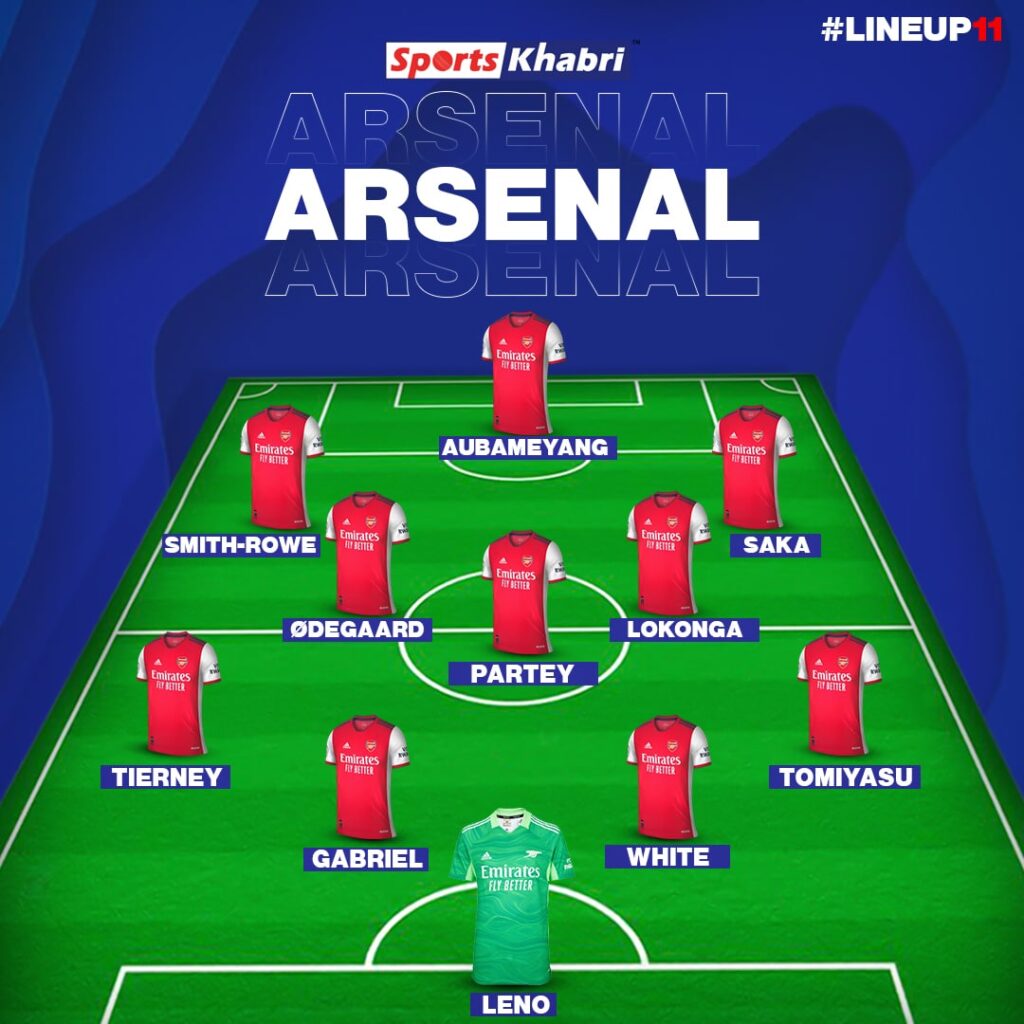 Probable XI from the current Arsenal squad
Probable XI from the current Arsenal squad
Arteta’s first acquisition was the highly-rated former RSC Anderlecht captain Albert Sambi Lokonga. The 21-year-old Belgium international is a technically gifted central midfielder with a long range of passing. He has fitted in beautifully into Mikel Arteta’s system, and with age on his side, Lokonga will only get better and could potentially add many dimensions to his game playing alongside Partey and Xhaka and under the tutelage of Mikel, who was a defensive midfielder himself.
Similar to the Lokonga signing, each and every signing this season has a purpose and reasoning behind it. Moreover, unlike previous seasons, after eleven games, it looks like the signings have been worth every single penny, while some look more like a coup rather than being overpriced acquisitions, which was a criticism thrown at Mikel and Edu by certain sections of the media.
Aaron Ramsdale has been a revelation, so has been Takehiro Tomiyasu. Mikel’s system looks solid and one that can last the distance, albeit having still been stuck at first gear for much of this season so far.
It is all starting to come together, though. Sure, there will be some blips along the way because of the inexperience in this side, given the players are not yet used to controlling games via pressing and controlling the ball, but once they learn to do that consistently, Arteta’s Arsenal will be elite.
Arsenal now have the right ingredients for Arteta’s preferred recipe, which would offer compactness in defensive transitions, positional play combined with players in midfield to counter-press and stretching the pitch as wide as possible, a build-up structure conducive to switching play with ease, potential for combinations and 1v1s on each side, and numbers between the line as well as inside the box.
Arteta has afforded his team a structure that is conducive to not only sustaining pressure but also creating chances with ease as a result of the ability to sustain said pressure and create via basic positional rotations/combinations. This is now obvious for all to see, since the new signings have the required technical ability.
Also Read – And just like that, he’s gone: Nuno shown the exit door as Conte returns to London
Artetaball — the Hurdle and the Blueprint
Arteta’s Arsenal like to control games with and without the ball these days, which is a lot different to the way they would set up last season. Their pressing patterns have also become much more refined instead of simply dropping deep as soon as they lose the ball.
It is crucial to note that pressing isn’t the be-all-end-all in football, but it is a staple philosophy for any possession-based team. Hardly any team in world football today play out from the back only to not press high up the pitch.
Why? Because the two go hand in hand.
The key aspect of possession-based football revolves around control, and if a team play out from the back only to fall back into a deep block as soon as possession is lost then they have no sustainment of attacks, pressure or control; it defeats the purpose. Pressing enables teams to get the ball back as quickly as possible, and with the ball, that is when good possession-based teams are in control. So, for those who say Arteta intentionally defends deep late on, I can assure you that that notion is false.
So, why aren’t Mikel Arteta’s Arsenal aggressive enough when he knows that the team must be aggressive and consistently press high because they’re a possession-based team?
Because the majority of players lack experience. They will carry out the manager’s instructions and improve as they grow together.
The likes of Liverpool and Manchester City defend deep in moments, but they always have the intent to get back up the pitch and press high again, and this can be seen in the sense that they are always dangerous and can score at any moment. That, however, cannot be said for Arsenal when they defend deep.
Players like Bukayo Saka and Emile Smith Rowe lack the experience to be a reliable outlet at the highest level. They fade from games; more experienced players don’t. Gabriel, likewise, doesn’t have the experience to maintain a high line and positional aggression for 90 minutes.
On an individual level, Arsenal players are capable of anything because of their technical capabilities, but none of Tomiyasu, Ramsdale, Saka, Smith Rowe, White or Gabriel have ever reliably competed at the highest level, and they are the central cogs in Arteta’s system.
Falling back into a deep block is a way of shirking responsibility. Arsenal’s players aren’t doing that, but they merely lack the experience at the highest level to carry out their roles reliably, which in turn sees the entire unit sit back and suffer when Arteta wants them to press instead.
However, this is nothing but a positive. Arteta’s players are capable of doing the hardest of things but merely lack the mental experience to carry it out at this exact moment, but they’re all on the same career trajectory. This squad will peak together, and the players are special with a very high ceiling.
Conclusion
What people easily forget and/or write off about Arsenal is that their squad is primed to peak at the same time. The likes of Ramsdale, Gabriel, White, Tierney, Tomiyasu, Lokonga, Partey, Ødegaard, Smith Rowe and Saka are yet to reach their prime years and look like a near-guarantee to become top-end players at the highest level.
Of course, there will be bumps along the way, because Arteta is still in the middle of his rebuild and has to deal with the likes of Alexandre Lacazette (who is in the final year of contract), Eddie Nketiah and Co., but the long-term future of the team looks bright, especially considering that they are playing in a top tactical system that suits them.
Not being able to notice Arteta’s tactical acumen is okay, by all means, but not recognising his aptitude for squad-building suggests either you’re in denial or this sport isn’t for you. His ability to identify suitable players along with his tactics and management of both players and pressure are elite.
Arteta wants Arsenal to press high and control games with the ball. The structure is there, and all the players have the technical and physical qualities to do it along with top mentalities to improve individually.
The players do lack experience, but given time, they will certainly explode.

